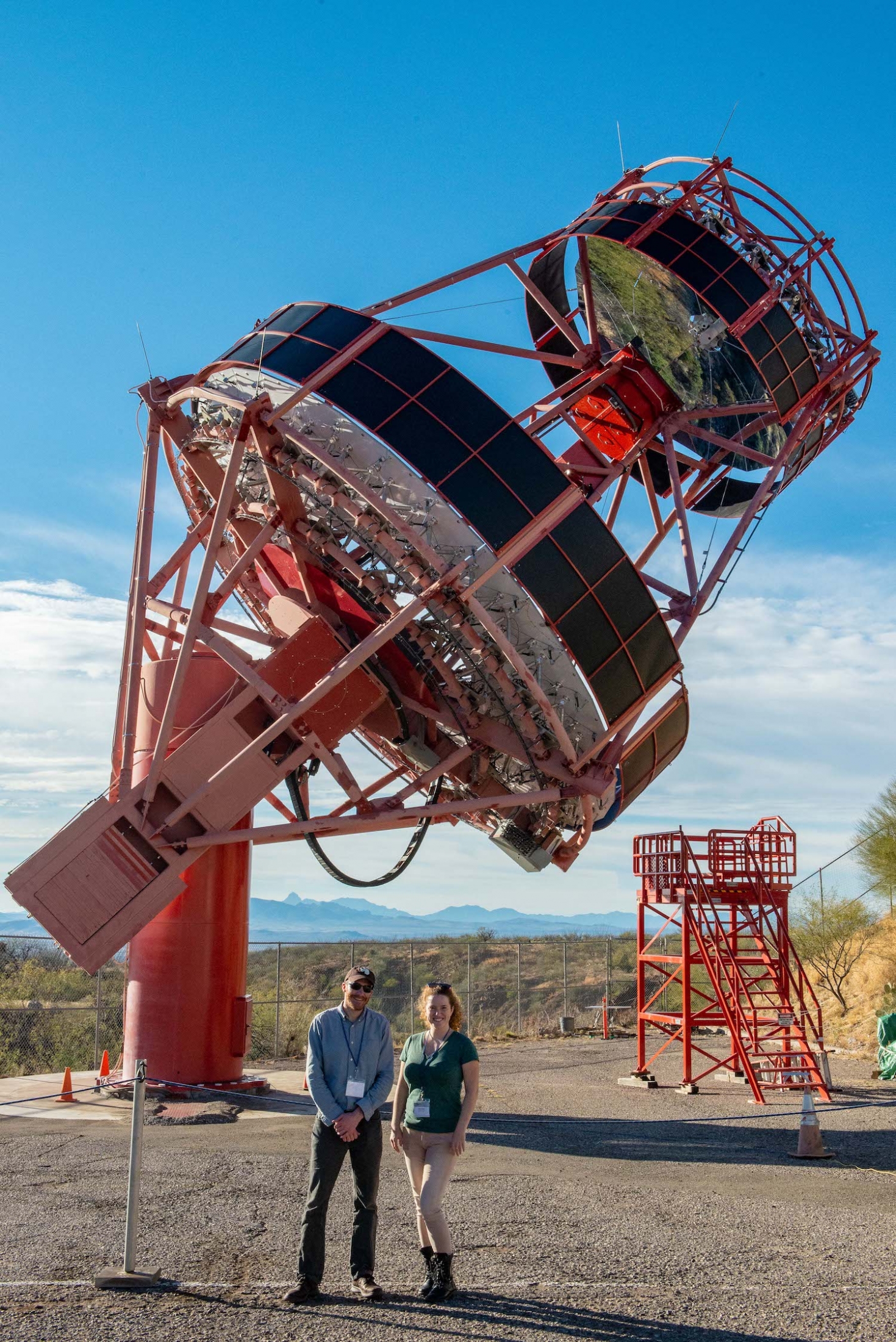A new telescope, part of an international effort to develop and build the world’s largest, most sensitive gamma-ray detector, was unveiled to the public Thursday (Jan. 17, 2019) in a ceremony at the Whipple Observatory on Arizona’s Mount Hopkins.
Known formally as the prototype Schwarzchild-Couder telescope, the new telescope is a working, high-end test bed for technologies to be used in the Cherenkov Telescope Array (CTA), a configuration of approximately 100 telescopes intended to give astrophysicists their best look ever at the transient effects of gamma rays interacting with particles high in the Earth’s atmosphere.
The heart of the new telescope is a novel, high-speed camera devised in part by scientists at the University of Wisconsin–Madison and in collaboration with researchers from other universities.
In astrophysics, gamma rays are known to be produced by some of the most energetic objects in the universe: supernova explosions, pulsars, neutron stars and the swirling environments around black holes. When the highly-energetic gamma rays reach Earth, they interact with molecules high in the Earth’s atmosphere and create a fleeting pulse of Cherenkov light in an air shower. The burst of light particles or photons lasts less than the blink of an eye — on the order of six nanoseconds.
Each pulse enables detection of a gamma ray a trillion times more energetic than can be observed with the human eye, according to Justin Vandenbroucke, a UW–Madison physics professor who has spent a decade working on the design, construction and integration of the camera into the new telescope.

“It is a very high resolution, very fast camera that captures gamma rays in the atmosphere,” says Vandenbroucke, who is also affiliated with the Wisconsin IceCube Particle Astrophysics Center at UW–Madison. “It operates at a billion frames per second and captures the direct output of a gamma ray shattering a molecule of air.”
Combined with a complex dual-mirror optical system that promises much greater resolution for the telescope overall, the camera is expected to yield a trove of new data on the Cherenkov air showers. The telescope’s optics provide a wide field of view, necessary to capture the unpredictable bursts of light that occur when a gamma ray crashes into an air molecule.
The newly-dedicated Schwarzchild-Couder telescope is an important test bed for technologies to be included in CTA, the long-planned configuration of nearly 100 telescopes to be situated in the Canary Islands and in Chile. When completed, it will be the largest ground-based gamma-ray detection observatory in the world. The international collaboration building CTA includes more than 1,400 scientists from 32 countries.
The prototype high-speed camera at the core of the telescope is the size of a golf cart, weighs several hundred pounds, and is capable of taking pictures at a billion frames per second.
The telescope unveiled this week on Mount Hopkins and its camera are funded by the National Science Foundation and international partners.
Read CTA press release here.
